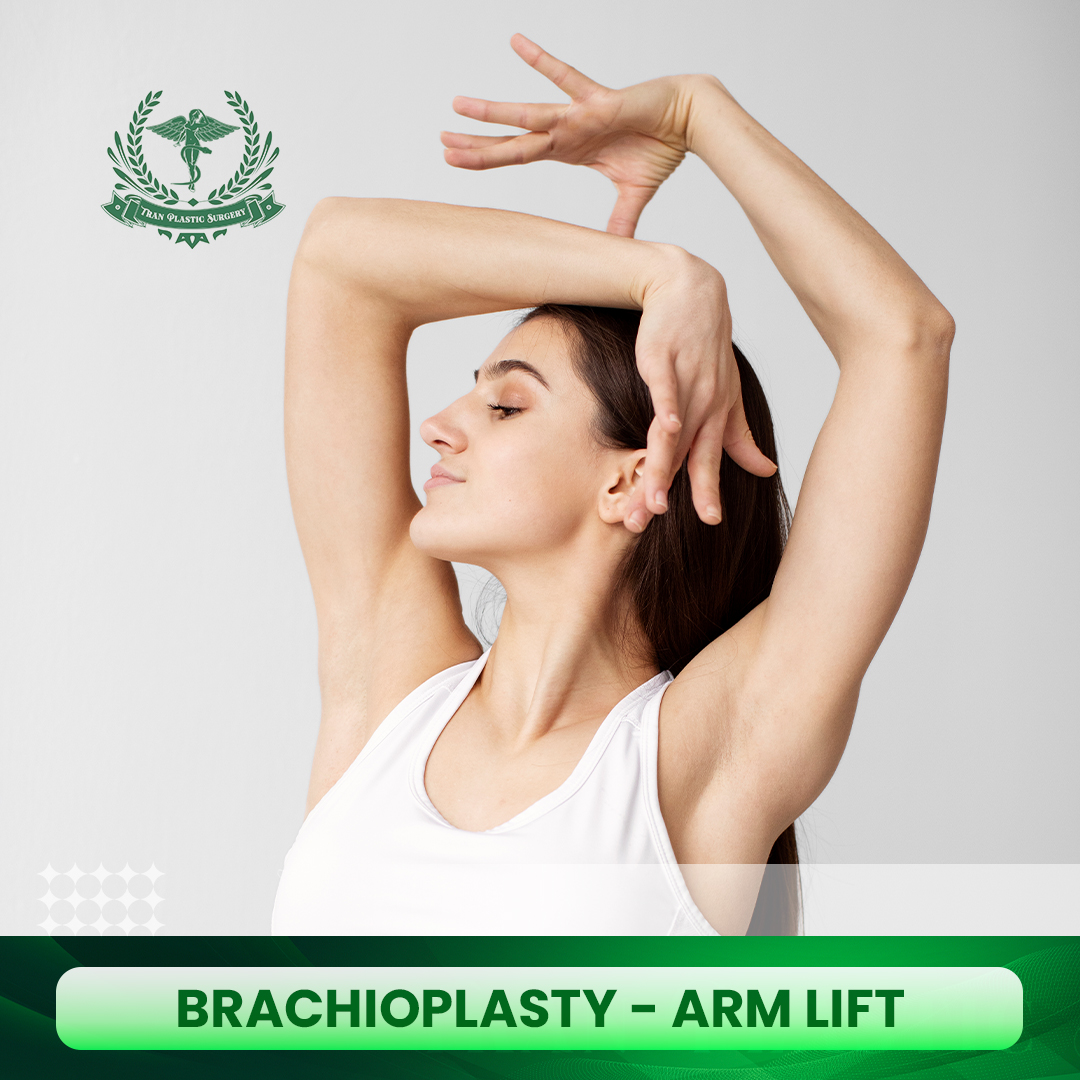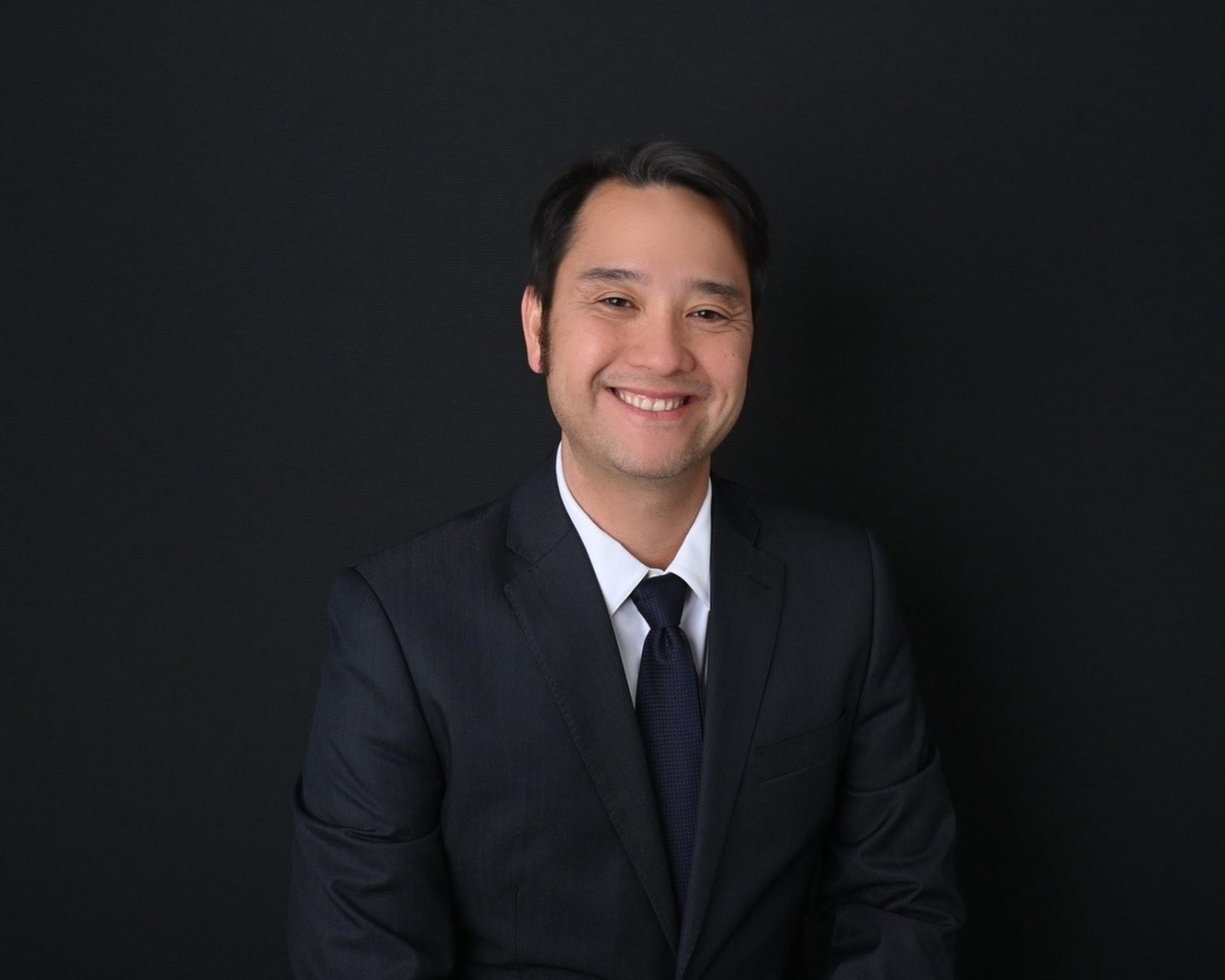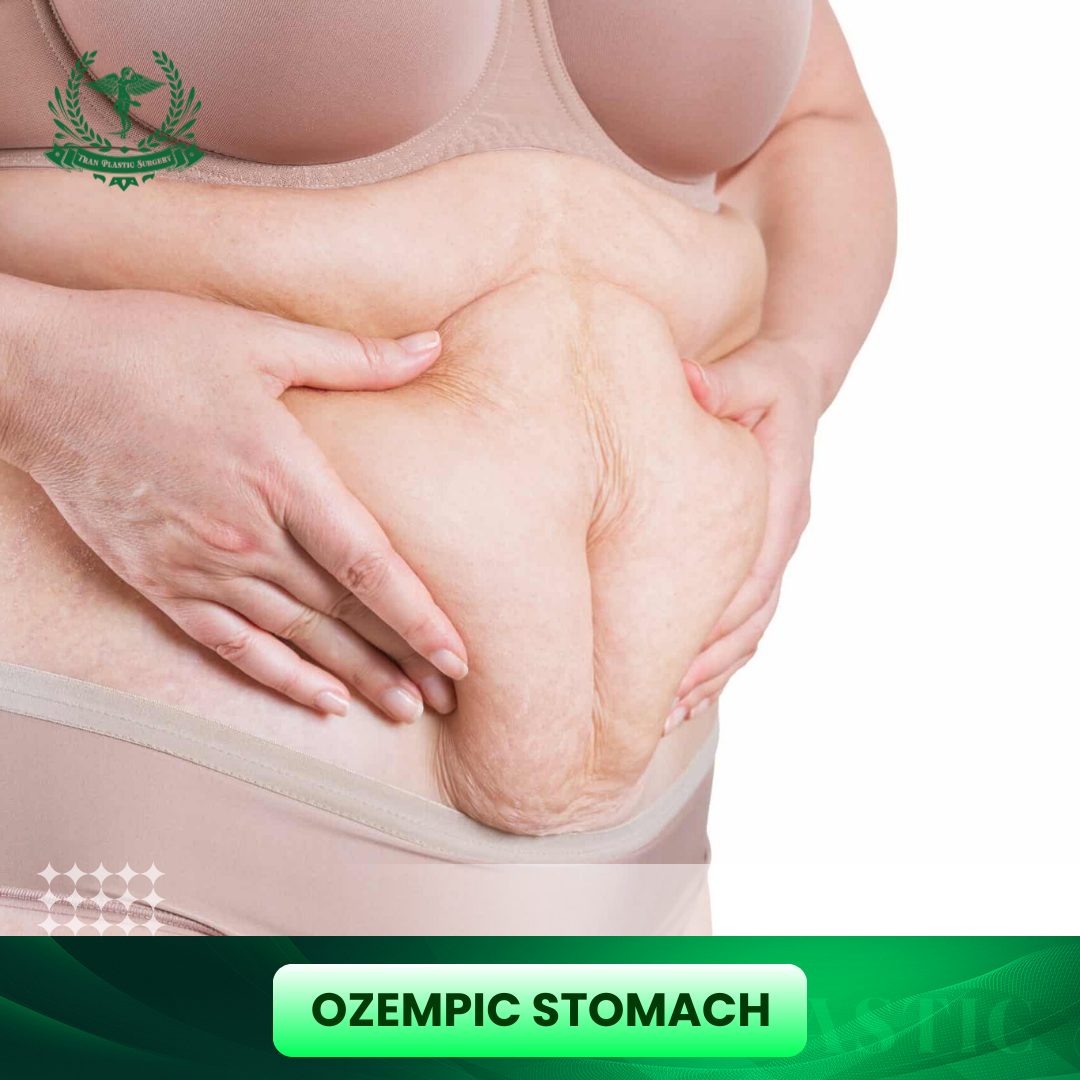Are you looking for firmer, smoother, and more contoured upper arms? Brachioplasty, commonly known as arm lift surgery, is a highly effective cosmetic procedure designed to address sagging skin and excess fat that can develop due to aging, significant weight loss, or genetics. If you’ve been considering this transformative surgery, this comprehensive guide will walk you through every essential aspect, helping you make an informed decision about restoring confidence in your appearance.
Table of Contents
ToggleWhat is Brachioplasty (Arm Lift Surgery)?
An arm lift, or brachioplasty, is a surgical procedure that reshapes the under portion of the upper arm, from the armpit to the elbow. It’s specifically designed to remove excess sagging skin and fat, often a result of significant weight loss or the natural aging process, which can leave the upper arms appearing loose and flabby. The goal is to create a more toned and proportionate appearance, enhancing the overall contour of your arms.
Brachioplasty involves making incisions on the underside of the arm to access and remove unwanted skin and fat. The remaining skin is then smoothed over the newly contoured shape of your arm, and the incisions are closed, resulting in a more defined and aesthetically pleasing upper arm. The procedure is typically performed under general anesthesia and can take a few hours, depending on the extent of correction needed.
Types of Brachioplasty Procedures
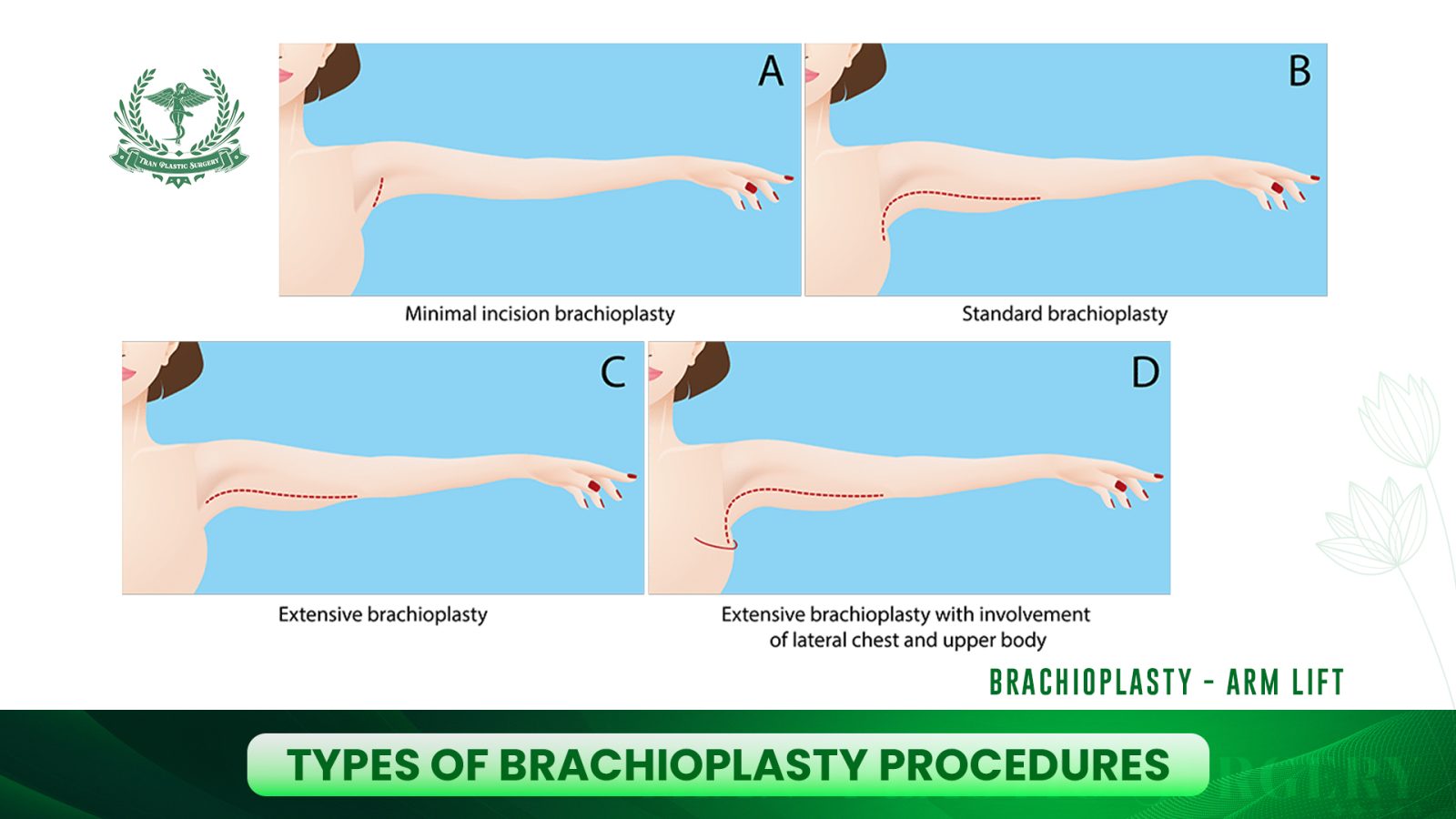
The specific technique used for your arm lift will depend on the amount and location of excess skin and fat.
- Standard Brachioplasty (Traditional Incision): This is the most common type, involving an incision that runs from the armpit down to the elbow on the inner or back side of the arm. It’s ideal for individuals with a significant amount of loose skin along the entire upper arm. This method provides the most dramatic results in terms of skin removal and reshaping.
- Limited Incision/Mini Brachioplasty: For patients with less extensive sagging, primarily confined to the upper arm near the armpit, a limited incision technique may be suitable. The incision is shorter and typically hidden within the armpit, resulting in less visible scarring. While less invasive, it offers more subtle results compared to a standard arm lift.
- Extended Brachioplasty: In cases where excess skin extends beyond the upper arm into the side of the chest, an extended brachioplasty may be necessary. This procedure involves a longer incision that extends from the armpit along the side of the chest, allowing for the removal of more widespread loose skin. It’s often chosen by individuals who have experienced massive weight loss.
The choice between these techniques depends on your unique anatomy and aesthetic goals. A standard brachioplasty offers comprehensive correction but results in a longer scar. A mini brachioplasty provides a less visible scar but is only suitable for minimal skin laxity. An extended brachioplasty addresses more widespread sagging but involves the longest incision. Your surgeon will discuss the best option for you during your consultation, taking into account the degree of skin laxity, fat deposits, and your desired outcome.
Want to explore the full benefits, procedure details, and results of an Arm Lift? Visit our Arm Lift service page at Tran Plastic Surgery to see if it’s the right choice for you.
Who is a Good Candidate for Brachioplasty?
Deciding if brachioplasty is right for you involves evaluating several factors, including your physical health, the condition of your arms, and your personal goals. The procedure is most effective for individuals who have significant sagging skin on their upper arms that cannot be resolved through exercise alone.
The most suitable candidates for an arm lift typically share these characteristics:
- Individuals with significant loose skin on the upper arms: This is often a result of substantial weight loss (such as after bariatric surgery) or the natural aging process, which causes skin elasticity to diminish.
- Stable weight: Candidates should be at or near their ideal body weight and have maintained it for a reasonable period. Significant weight fluctuations after surgery can compromise the results.
- Good general health: Patients should be free from medical conditions that could impair healing or increase surgical risks. This includes having well-controlled chronic conditions.
- Realistic expectations: It’s crucial for candidates to understand what brachioplasty can and cannot achieve. While it can dramatically improve arm contour, it will result in scars, and the extent of improvement depends on individual factors.
Considerations Before Brachioplasty
Before committing to brachioplasty, a thorough consultation with a board-certified plastic surgeon is essential. During this discussion, your surgeon will assess your medical history and discuss potential factors that could influence your eligibility or the outcome of the surgery.
Smoking and certain medical conditions can impair healing and increase the risk of complications, so it’s essential to fully disclose your medical history and medications to your surgeon. Brachioplasty requires a recovery period with temporary limits on arm movement and activity. Following post-operative instructions and managing swelling or discomfort are crucial. Understanding and committing to the recovery process are key to achieving the best results.
How Much Does Brachioplasty Cost?

The average cost of an arm lift procedure typically ranges from $6,000 to $12,000. However, many patients find their total investment falls between $6,700 and $10,000, which generally includes all associated expenses. It’s important to note that these are averages, and prices can be higher in major metropolitan areas or for more complex cases. For instance, the American Society of Plastic Surgeons reports the national average for the surgeon’s fee alone to be around $6,192, which does not include other crucial costs.
Does Insurance Cover Brachioplasty?
In most cases, brachioplasty is considered a cosmetic procedure and is not covered by health insurance. However, there are some rare exceptions.
- What may be covered (functional impairment vs. cosmetic): If the excess skin on your arm causes a documented impairment (e.g., severe abrasions, recurrent infections, or significant limitation of movement that interferes with daily activities) and is deemed medically necessary by your doctor and insurance provider, there is a small chance that you may be covered in part. This is uncommon and requires detailed documentation.
- Handling Insurance Claims: If you believe your brachioplasty qualifies for coverage, you will need to work closely with your surgeon’s office to submit all necessary medical paperwork and appeals to your insurance company. This is a complex process and there is no guarantee of approval.
Step by Step Guide to Arm Lift Surgery
Undergoing brachioplasty is a significant decision, and understanding each phase of the process can help alleviate concerns and prepare you for a smooth experience. From your initial consultation to the post-operative care, here’s a step-by-step guide to arm lift surgery.
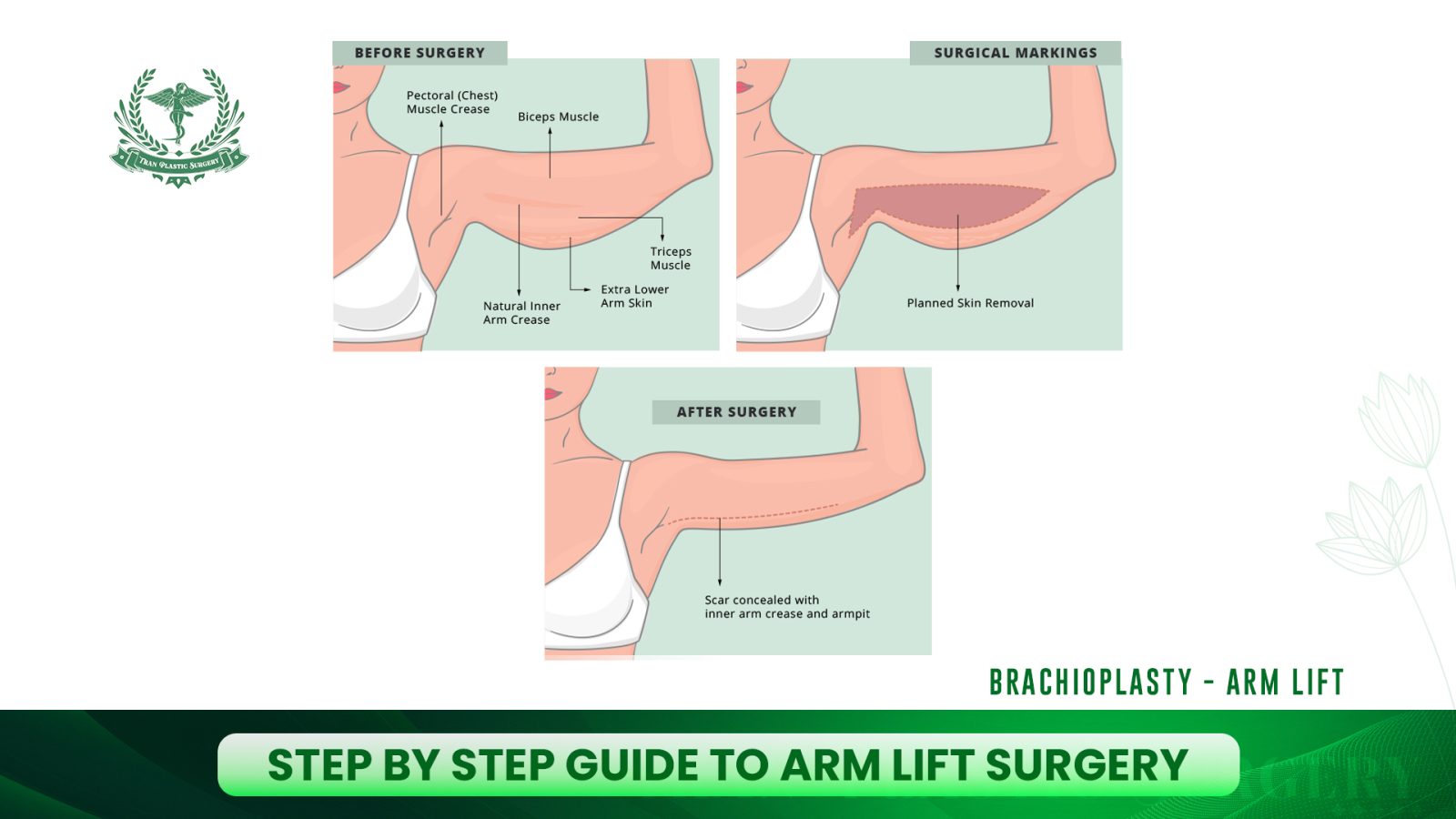
Step #1 - Pre-Surgery Preparations
The journey to toned arms begins long before the actual surgery. This crucial phase ensures you are medically cleared and fully prepared for the procedure.
- Initial consultation: Your first meeting with a board-certified plastic surgeon is vital. You’ll discuss your aesthetic goals, medical history, and current health. The surgeon will evaluate your arms, discuss the most suitable brachioplasty technique, and explain the potential outcomes and risks.
- Medical evaluations: Before surgery, you’ll undergo various medical tests, which may include blood tests, a physical exam, and an electrocardiogram (ECG). These evaluations ensure you are healthy enough for surgery and anesthesia.
- Medication adjustments: Your surgeon will review all medications, supplements, and herbal remedies you are taking. You may be advised to stop certain medications, especially blood thinners, for a period before surgery to minimize bleeding risks. You should also quit smoking well in advance of the procedure, as it can severely impact healing.
Step #2 - Day of Surgery
On the day of your brachioplasty, you’ll arrive at the surgical facility, ready for your transformation.
- Anesthesia: The procedure is typically performed under general anesthesia, meaning you will be completely asleep and pain-free during the surgery. In some cases, local anesthesia with sedation may be used.
- Incision placement: Once anesthesia has taken effect, your surgeon will make the planned incisions. The exact location and length of these incisions will depend on the brachioplasty technique chosen (standard, limited, or extended), but they are usually placed on the inner or back side of the upper arm.
- Skin removal and reshaping: Through these incisions, your surgeon will carefully remove excess skin and, if necessary, underlying fat. The remaining skin is then meticulously tightened and smoothed over the new, more contoured shape of your arm.
- Closing incisions: After the desired reshaping is achieved, the incisions are closed with sutures, often dissolvable ones. Drains may be temporarily placed to collect any excess fluid and reduce swelling. Compression garments are then applied to support the new contours and minimize swelling.
Step #3 - Brachioplasty Scars
It’s important to understand that brachioplasty, by its nature, involves incisions and therefore will result in scars.
- Typical scar locations and appearance: For a standard arm lift, the scar typically runs from the armpit down to the elbow. With a limited incision, the scar is confined to the armpit area. Extended brachioplasty scars can extend onto the chest wall. Initially, scars will be red and raised, gradually fading and flattening over several months to a year, though they will never completely disappear.
- Scar healing process and management: Proper scar care is crucial for optimal healing and minimizing visibility. Your surgeon will provide detailed instructions on how to care for your incisions, which may include applying topical creams, silicone sheets, or massage techniques. Protecting scars from sun exposure is also vital to prevent hyperpigmentation.
Choosing the Best Brachioplasty Surgeon Near You - Tran Plastic Surgery
When considering a significant procedure like brachioplasty, selecting the right surgeon is paramount to ensuring both your safety and satisfaction with the results. If you’re searching for a highly skilled and reputable “Brachioplasty Surgeon Near You“, Tran Plastic Surgery stands out as a leading choice. With a commitment to patient-centered care and exceptional aesthetic outcomes, they specialize in arm lift procedures designed to meet individual needs.
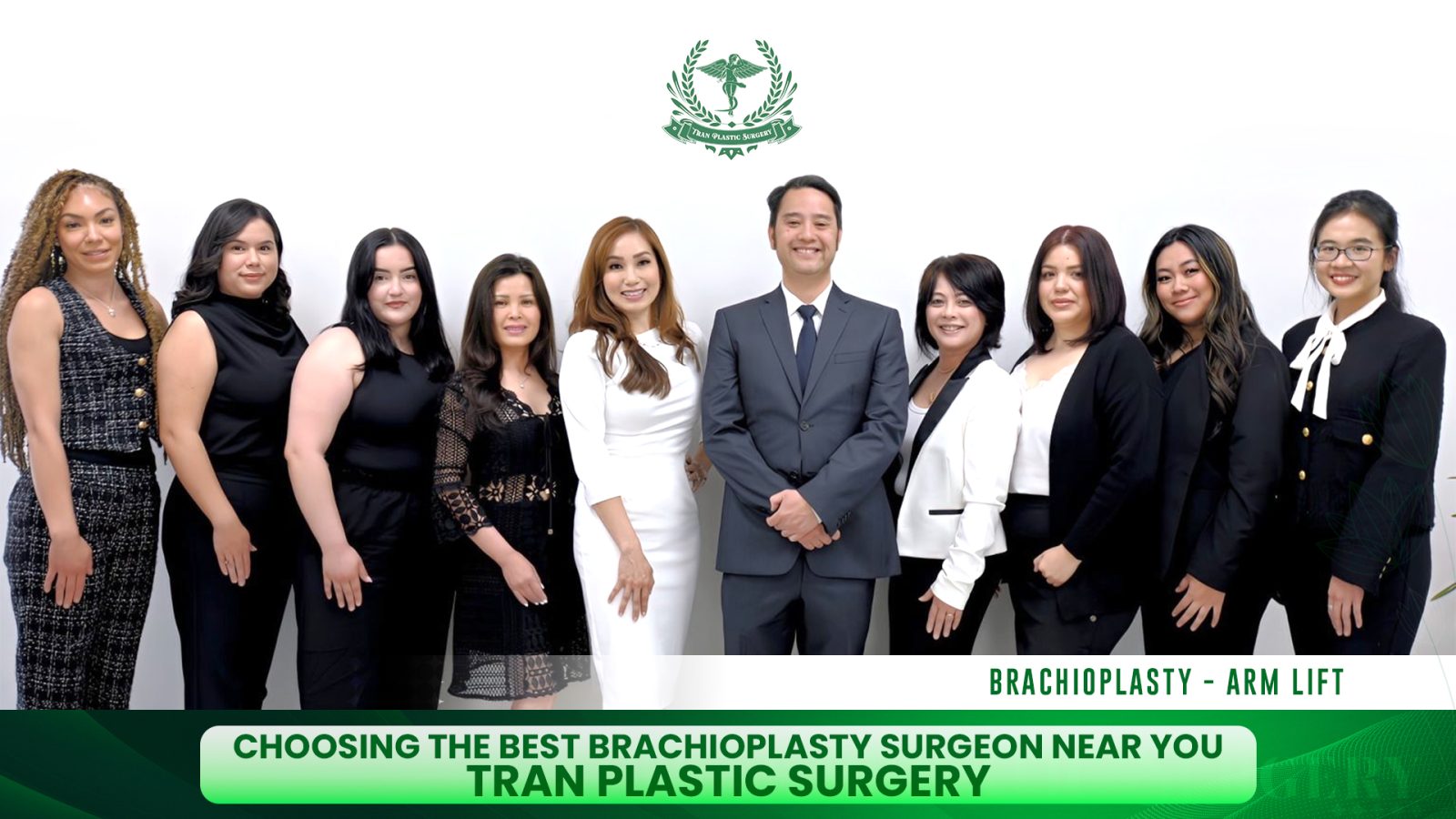
At Tran Plastic Surgery, we understand that choosing a surgeon is a deeply personal decision. Our team is dedicated to providing a safe, supportive, and professional environment, ensuring you feel confident and informed every step of the way. With extensive experience in brachioplasty and a reputation for meticulous attention to detail, Tran Plastic Surgery is committed to helping you achieve the beautifully contoured arms you desire.
Ready to transform your arms and boost your confidence? Contact Tran Plastic Surgery today to schedule your personalized consultation and discover why so many patients trust us with their brachioplasty journey.
Brachioplasty Risks and Complications
As with any surgical procedure, brachioplasty carries certain risks and potential complications. While serious complications are rare, it’s crucial to be aware of them before undergoing surgery. Your surgeon will discuss these thoroughly during your consultation.
- Potential Side Effects: Immediately after surgery and during the initial recovery phase, you can expect some common and generally temporary side effects:
- Swelling: Swelling in the arms is normal and can persist for several weeks or even months. Compression garments and elevation help manage this.
- Bruising: Bruising around the surgical areas is also common and typically resolves within a few weeks.
- Temporary numbness: You may experience temporary numbness or altered sensation in the treated areas due to nerve swelling or irritation. This usually improves over time.
- Pain and discomfort: Mild to moderate pain and discomfort are normal and can be managed with prescribed pain medication.
Conclusion
Brachioplasty offers a powerful solution for individuals seeking to achieve more toned, firm, and aesthetically pleasing upper arms. By addressing excess skin and fat, this transformative procedure can significantly enhance your body contour and boost your confidence. While it involves a surgical process and a recovery period, understanding each step, from preparation to aftercare, is key to a successful outcome.
Choosing a qualified, board-certified plastic surgeon is paramount for ensuring your safety and achieving optimal results. They will guide you through the process, discuss realistic expectations, and help you determine if brachioplasty or another arm contouring procedure is the best option for your unique needs. If you’re ready to explore how brachioplasty can help you achieve your aesthetic goals, we encourage you to schedule a consultation today to see if this procedure is right for you.

